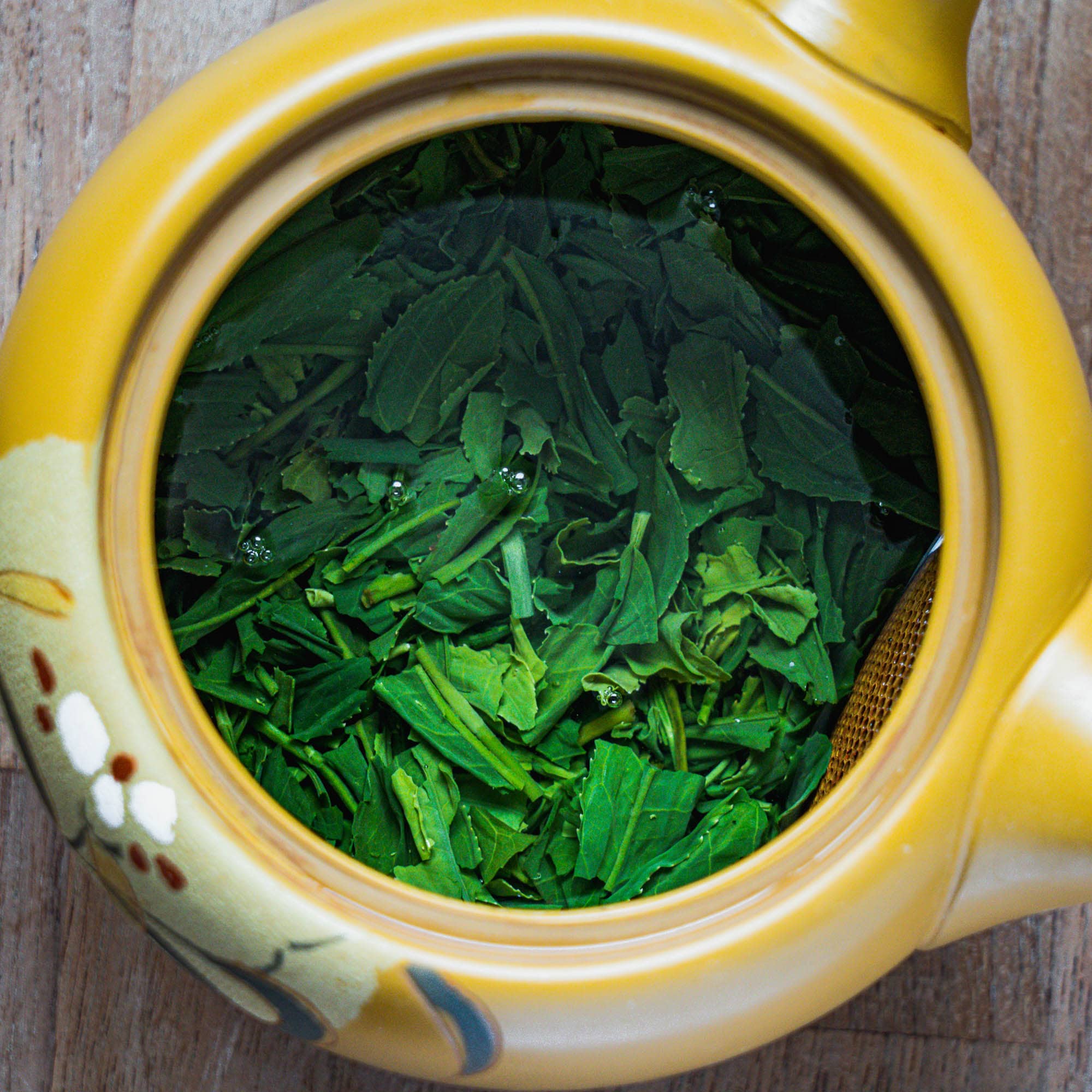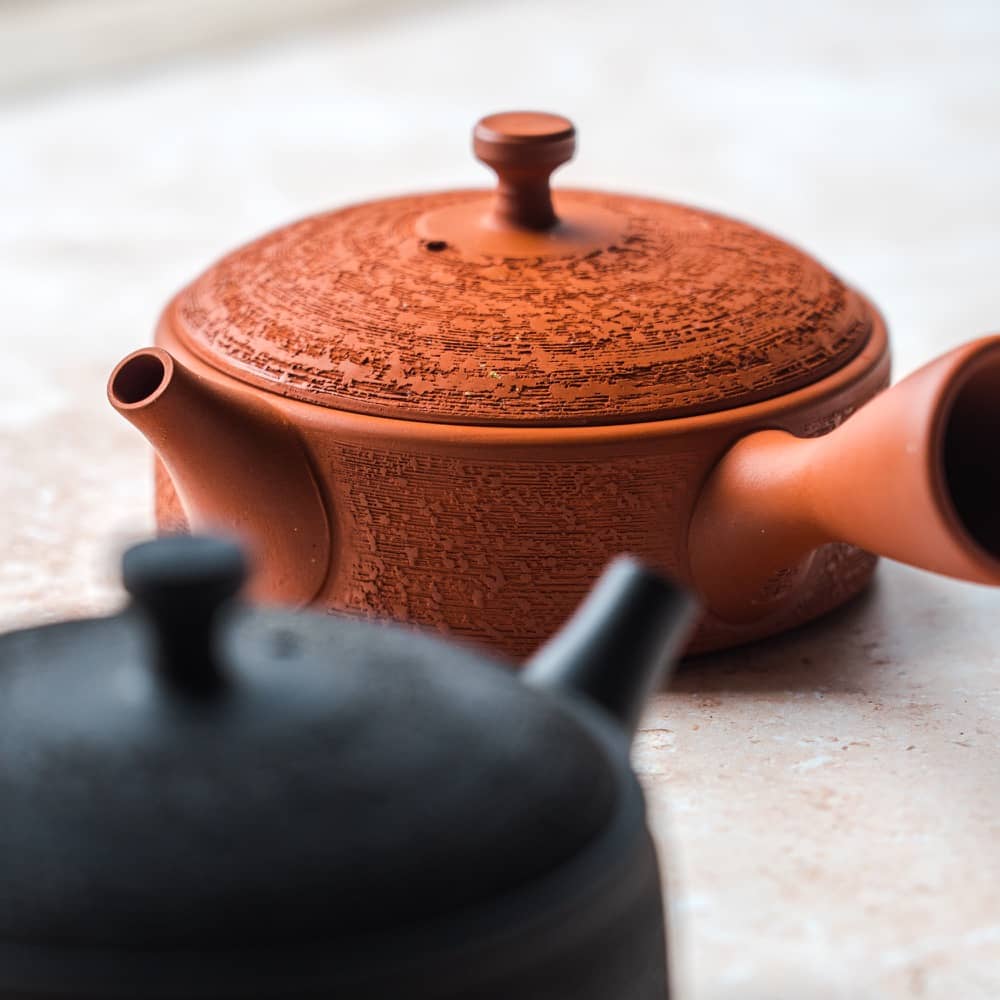How Sencha is Made, Part 3: Shiage (Refining)
Though the cultivation and harvesting of the tea leaves determines the quality of the raw material, the processing ultimately determines the final style, taste, and quality of the sencha. If you haven’t read parts one and two of this series, check them out first.

The post-harvest processing for most types of Japanese tea, sencha certainly included, can be split into two main parts:
- The production of aracha (荒茶), also known as crude or unrefined tea
- Refining that aracha into shiagecha (仕上げ茶), also known as refined or finished tea
Sometimes a single producer will do both themselves, but it is generally more common for a farmer or farmers cooperative/collective to simply produce aracha which is then sold on the wholesale market to larger tea companies and producers for shiage (仕上げ - finishing).
What’s the Point of Shiage?
While you can certainly drink aracha, it is quite unrefined (hence the name), containing unwanted stems, twigs, old leaves, etc. To transform this crude tea into the sencha you know and love, the tea must undergo various stages of refining. The exact processes and machines vary from producer to producer, but the main steps are:
- Sort the Tea
- This means removing any unwanted twigs and stems, along with leaves that are too big or small
- Fire the Tea
- This removes excess moisture from the leaves and also determines how roasty the final tea’s flavour is
- Blend the Tea (optional)
- Aracha from multiple fields, farms, or harvests can be blended to produce a specific and consistent flavour profile
Depending on the decisions a producer makes in these three stages, the same aracha could produce all sorts of finished senchas, with varying flavours and price points.
As mentioned, the order of these stages along with the methods they use to achieve them vary from producer to producer — the following is merely one example: how Osada Seicha refines tea.
Blending (gōgumi - 合組)
Before any shiage can begin, the aracha must be taken out of cold storage. In the case of shincha (freshly harvested tea), the aracha will go straight from production into shiage, but in many cases, the tea is stored in the aracha state before being refined as needed.
In Osada Seicha’s shiage procedure, the first step is to add the aracha into a large rotating drum that mixes it evenly. For blended senchas, all of the component aracha would be added to this drum and allowed to mix and blend together. Even in the case of single-origin teas, this step is important as it ensures that the tea is of an even consistency, as smaller and larger pieces may have settled in the bag during storage.
For some producers, the blending stage comes later in the process.
Sorting

The bulk of shiage revolves around sorting the ‘on-grade’ leaves (pictured above), known as honcha (本茶), from the unwanted material, which incudes stems, dust, broken leaves, old leaves, and twigs. Some of this off-grade material, such as the stems and powder, is still commercially viable as various types of demonocha (出物茶).
For hand-picked tea, this step is largely bypassed as the ‘sorting’ was already done by the tea pickers during harvest as they only pick the good material. The need for large-scale mechanical sorting arises from the less discerning nature of mechanical harvesting methods (for a quick breakdown of these methods, refer to Part 1 of this series).
Sieving
The first, and simplest method of sorting the leaves is through the use of various sieves and screens. The fineness of the mesh screen is measured by how many holes there are per sun (寸~1.2in, 3cm), a traditional Japanese unit of length. For example, if there are 10 holes/寸, it is a 10号 screen. The use of traditional units dates back to when tea was refined solely by hand on bamboo and later metal screens. Today, the sifting machines mechanically shake and rotate the sieves.
First, a fine mesh of around 25号 is used to sift out the dust and powder, known as konacha (粉茶 ), before a slightly larger mesh of around 12号 is used to sift out the mecha (芽茶). Mecha is the term used for the broken tips of leaves and small buds that are sifted out during this process. Konacha and mecha are often used in teabags or traditionally served at sushi restaurants as they are cheap and infuse quickly.

Further sieving in both gyroscopic and shaking-style machines removes loose veins from the tea as well as atama (頭) and twigs. Atama is the industry term for the large leaves that are ‘above grade’. These are typically old leaves or overmatured leaves that are accidentally picked during harvest. Sometimes, however, they are still good leaves, but for consistency and aesthetic reasons, they are considered too large. In these cases, these leaves may be cut down to size, and mixed back into the honcha.
Stem Removal

At this stage, all of the tea is of on-grade size. However, there are still stems in the mix, which cannot be sorted out using meshes and screens. To mechanically remove the stems from the honcha, two ingenious methods are employed which make use of the stems’ colour and electrostatic properties.
In facilities that use both methods, the electrostatic stem separator is used first. When passed through a high-voltage electric field, the stems are more strongly attracted to the electrode. Using this property, roughly 25% of the stems can be removed.
Next, the tea is passed through an optical stem separator. Here, the tea is spread into a thin layer and a camera is used to detect the darker-coloured honcha. This data is then sent to a computer-controlled air jet which individually blasts each good leaf onto a separate conveyor belt, allowing the stems to fall into a separate bin. This method is more discerning than the electrostatic machine but is much slower, hence why these machines are often paired, with the electrostatic system operating first.
In this video, you can hear the sound of the air jets as they fire at the falling tea leaves.
The sorted stems can then be fired and sold as kukicha.

During the entire sorting process, around 10% by weight of the aracha is removed. The amount varies on the intensity and severity of the sorting, which in turn depends on the grade, price, and style of tea the producer wants to make. For example, for a high-grade or competition tea, the sorting will be extremely intense, so that only perfectly on-grade and intact leaves are present in the final product.
For more general sencha however, some of the off-grade material, such as stems and broken leaves, is allowed to remain in the honcha as it makes the tea more economical and rounds out the flavour profile.
Firing (Hiire - 火入)

Lastly, the tea undergoes a final heating and drying process known as hiire or firing in English. This can be accomplished in many ways from hot air in rotating drums to gas-fired heated plates. The most traditional method is over charcoal, which is now incredibly rare (Morisaki-san’s senchas being one such rarity). Regardless of the heat source, the purpose of hiire is twofold:
- Reduce the moisture content from 5% to <3%, increasing the shelf life of the tea at room temperature
- Setting the final flavour of the tea
The first point is purely practical, allowing the tea to be sold and traded to distributors and customers without the need for deep freezing it.
The second point is far more interesting as it has a massive impact on the final style and taste of a tea. While the length of firing is relatively standard at around 20-30 minutes, the temperature can vary.
Weaker firing, using temperatures around 80°C (176°F), is typical of the Uji and greater Kyoto region’s style, as this dries the tea without heating away all of the fresh and green aroma compounds. Additionally, keeping the temperature below 100°C (212°F) avoids the formation of new, ‘roasty’ aromas. In addition to Uji, this gentler style of hiire is often used on top-grade and competition-bound teas, as it best preserves the leaves’ natural qualities.
As with coffee, stronger firing/roasting heats away some of the ‘fresh-tasting’ aromatic volatiles as well as creating new aroma compounds which obscure the origin characteristics of the raw material. In tea, these compounds, chiefly pyrazines and pyrroles (mostly 2,5-dimethylpyrazine, 1-ethylpyrrole-2-aldehyde, 2-acethylpyrrole)¹ contribute to a slightly toasty, nutty aroma. This can be employed to mask off-flavours in lower-quality teas, such as mass-produced fukamushi sencha destined for grocery store shelves.
Additionally, stronger hiire can be used stylistically, to bring out nutty and chocolatey notes from teas. This is popular in Yame and Kagoshima which are known for this flavour profile. Compared to the low temperatures of Uji, strong hiire often uses much higher temperatures of around 120-130°C (248-266°F).
Once the tea is fired, it is ready to be packaged and delivered to the customer.
If you haven’t read the first two parts of this series, you can find them here and here.
References:
¹Hara, Kubota; 緑茶火入れ中における香気の形成と変化, 1984
Muneyuki Nakagawa; Regarding the Taste of Tea, Chanoyu and Science p.236 Tankosha (2000)

Loose Leaf











